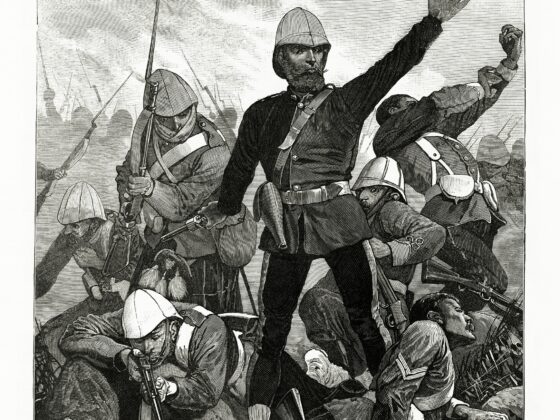One of our family’s favorite Christmas activities is reading Barbara Robinson’s wonderful story, The Best Christmas Pageant Ever. It tells of how some ragamuffin children called the Herdmans invaded a sedate Sunday School pageant and in so doing brought alive the meaning of Christ’s birth.
Gladys Herdman, for one, grabbed the role of “the Angel of the Lord.” When the narrator’s mother reads the story of the Angel’s appearance to the Virgin Mary,
“Shazam!” Gladys yelled, flinging her arms out and smacking the kid next to her.
“What?” Mother said. Mother never read “Amazing Comics.”
“Out of the black night with horrible vengeance, the Mighty Marvo…”
“I don’t know what you are talking about, Gladys,” Mother said. “This is the Angel of the Lord who comes to the shepherds in the field and-”
“Out of nowhere, right?” Gladys said. “In the black night, right?”
“Well…” Mother looked unhappy. “In a way.”
I think Gladys was onto something. The angels of the Christmas story are not chubby cherubs out of a “Past Times” catalogue. They’re more like the Mighty Marvo.
Angels appear at the intersection points of biblical history. The Old Testament ends with the prediction that the Lord will send his messenger (“angel”) just before he suddenly, personally, comes his Temple (Malachi 3:1). Almost five hundred years pass and then, suddenly “out of the black night,” angels begin to appear again, announcing that the Lord has come – as a baby in Bethlehem! And if we believe Advent is not just about remembering Jesus’ first coming, what about his Second Coming, when “the Lord himself will descend from heaven with a cry of command, with the archangel’s call, and with the sound of the trumpet of God” (1 Thessalonians 4:16)?
Angels also appear at the intersection points of heaven and earth: “And suddenly there was with the angel a multitude of the heavenly host praising God and saying, ‘Glory to God in the highest, and on earth peace among men with whom he is pleased!’” (Luke 2:13-14). When we worship “with angels and archangels,” we stake a claim in the unseen world above, because the Gospel, as the great theologian Karl Barth put it, “is the event between heaven and earth or it is not the event between God and man, the event of Christ.” If we demythologize the angels, Barth says, all we’re left with is “a little morality and mysticism,” the ingredients of a typical Christmas pageant – minus Gladys.
Angels appear at the intersection of life and death. Angels shatter our expectation that life is just goes on and on and on. Zechariah is struck dumb. Mary marvels, “How can this be?” And the shepherds are sore afraid. So much of real life is humdrum, one damned thing after another… until we are jolted into another reality, as when the doctor says the dread word “cancer.” At such moments, angels may again appear relevant. Diane Komp, a pediatric oncologist, records the last words of a seven-year-old girl named Anna, who raised herself up on her pillow and said: “The angels – they’re so beautiful! Mommy, can you see them? Do you hear their singing? I’ve never heard such beautiful singing!”
Awesome as they are, they are also angels of mercy, rejoicing over one sinner who repents and taking them into “Abraham’s bosom” (Luke 15:5; 16:22). While the Bible does not clearly teach that we each have a personal guardian angel, Jesus does say of his disciples that “their angels always behold the face of my Father in heaven” (Matthew 18:10). And they present our prayers like incense before God (Revelation 5:8).
I’m not sure I’ve ever seen an angel. But I do believe that a church that awaits their visitation will be open for a new chapter in its history. How better for the Church to begin the new year than with Gladys’ Good News: “Shazam! Hey, unto you a child is born!”
This editorial was written for the December 1998 issue of Encompass, the newsletter of the American Anglican Council.





